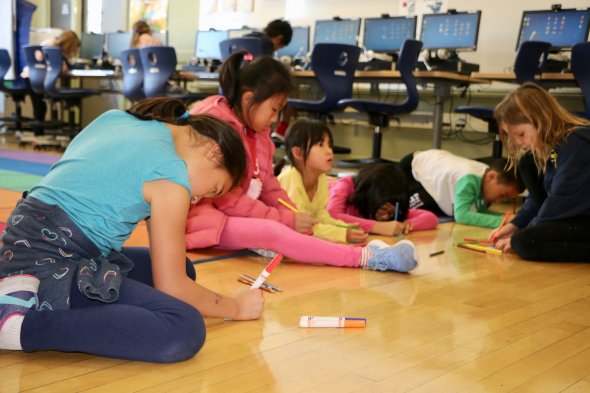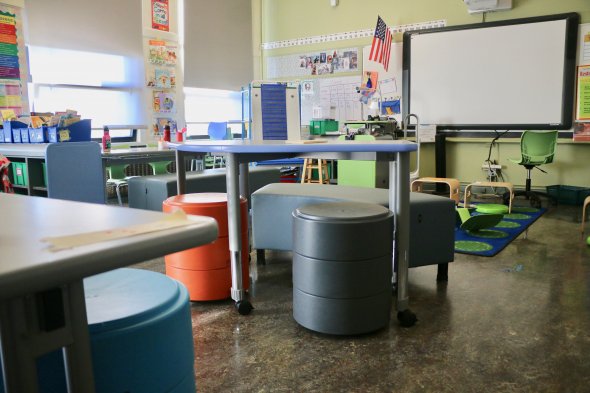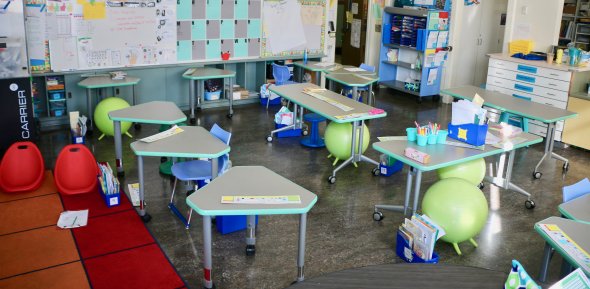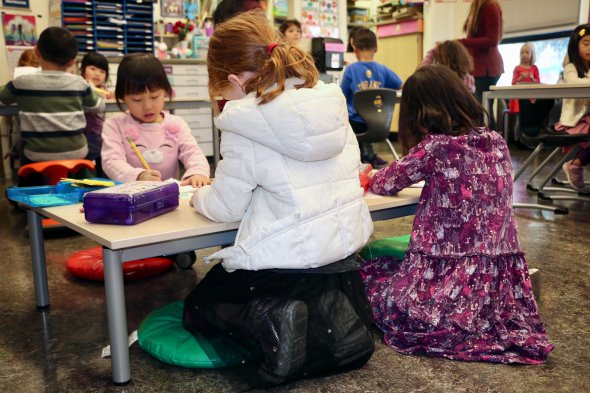The Design Challenge Link to this section
With a strong vision for Personalized Learning, FSK was ripe for this deep exploration of their instruction and physical space. The teacher team was comprised of seven teachers ranging from Kindergarten through fourth grade who redesigned seven classrooms. The FSK teachers focused on creating physical classroom spaces that could best support personalized learning, flexibility, and collaboration.

Principal Quote
“[This program] gave us the opportunity to create learning experiences and environments that are appropriate and conducive to promoting the development of the skills identified on the Graduate Profile Vertical Articulation through Project based learning and Personalized Learning Environments. It is so rewarding to see our students are taking the leap on making their learning visible and building a sense of confidence in understanding themselves as learners.”

Student Quote
“The new furniture! It feels great; I don't know why, but starting off a new school year with new furniture helped me feel ready to learn.”

Student Quote
"[The classroom] makes me feel comfortable and cozy but still in a way where I can learn effectively."

Teacher Quote
"I LOOOVE the layout of my classroom, and my students were super excited to see the redesign."
Highlighted Design Features Link to this section
-
Flexible seating (including cushions, wobble seating, tall stools, standard seat with slight rocking movement, and couches) allow students to select the seating that is most comfortable for them and is the best fit for the activity they are working on (quiet reading, group math work, a poster project, etc.)
-
Flip up tables allow for teachers and students to easily move the tables to the side of the room creating more space for yoga, dancing, reading on the floor, circle time, and much more!
-
Moveable tables allow for teachers and students to change the configuration of the room regularly to facilitate more collaboration and teamwork.
-
Collaborative tables allow students to more easily work together on projects and share necessary supplies.
-
Mobile White boards support teachers in conducting direct instruction in varying parts of the classroom to keep lessons dynamic as well as providing surfaces for project teams to share and display their work and process.
-
Calming and quiet areas support students who need some quiet, calm time to do a solitary activity like reading or for students who simply need some decompression time before rejoining the group activity. These areas are cozy and comforting.
-
Reading nooks support students in having a comfortable place to read during quiet reading time where they can be low to the ground, cozy, and comfortable. Each of these areas looks different but includes soft seating, low seating, and easily accessible books.
-
Accessible storage that allow teachers to distribute supplies easily to their students so students can access what they need when they need it as well as maintain a healthy flow of movement in the space (as opposed to a bottleneck around one supply station.)
This page was last updated on August 3, 2020

